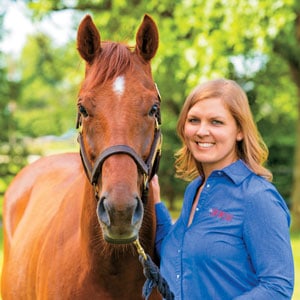Belgian JEB Carrier Rate Steady; Mare Testing To Be Required
- Topics: Article, Draft Breeds, Foal Care, Other Skin Problems, Saddlebred
Breed registry officials have taken steps over the last decade to reduce the number of Belgian foals born with a fatal skin disorder called junctional epidermolysis bullosa (JEB). And while veterinarians report anecdotally that they’re seeing fewer cases, a new analysis of mandatory sire screening results has spurred the registries to expand testing requirements.
John D. Baird, BVSc, PhD, professor emeritus of the University of Guelph’s Ontario Veterinary College, worked with researchers at the University of California (UC), Davis, Veterinary Genetics Laboratory to examine 10 years of data from both the Belgian Draft Horse Corporation of America (BDHCA) and the Canadian Belgian Horse Association (CBHA). He presented the team’s results at the 2013 American Association of Equine Practitioners’ Convention, held Dec. 7-11 in Nashville, Tenn.
Junctional epidermolysis bullosa is one of a large group of inherited diseases that result from a failure to produce a protein essential for skin layer adhesion. Affected foals are “characterized clinically by a fragile skin that results in ulcers and erosions following minor trauma,” he said. These diseases are named for where the level of separation takes place in the skin. Epidermolysis bullosa can occur in a variety of species, but Belgian horses experience a particular type at the level between the epidermis (outer layer of the skin) and the dermis, which is immediately beneath the epidermis. Often called “hairless foals,” Belgian neonates with JEB have large lesions on the body that appear as if the skin is missing. Baird noted that a similar condition occurs in Saddlebred foals, but it involves a different mutation in a different gene.
He said owners might notice a blood-tinged discharge coming from an affected newborn foal’s mouth. Inside the mouth they’ll often discover blisters and ulcers as the source of the blood. Foals with JEB also have incisor teeth visible at birth (normally, a newborn foal has no teeth) that are serrated from enamel erosion. Owners usually first notice the skin lesions over the joints and where there is contact pressure (mainly on areas where their skin makes contact with the ground when they lie down, such as over fetlock joints, hock joints, and even on head where there is contact with the ground on lying in a stall or on the ground). Lesions on the foals’ legs often extend all the way down to the feet. Human researchers have suggested that leg rubbing in utero could be the cause of these lesions that might be present at birth. Some foals with JEB will lose one or more hooves due to absence of the protein
Create a free account with TheHorse.com to view this content.
TheHorse.com is home to thousands of free articles about horse health care. In order to access some of our exclusive free content, you must be signed into TheHorse.com.
Start your free account today!
Already have an account?
and continue reading.

Written by:
Stephanie L. Church, Editorial Director
Related Articles
Stay on top of the most recent Horse Health news with















